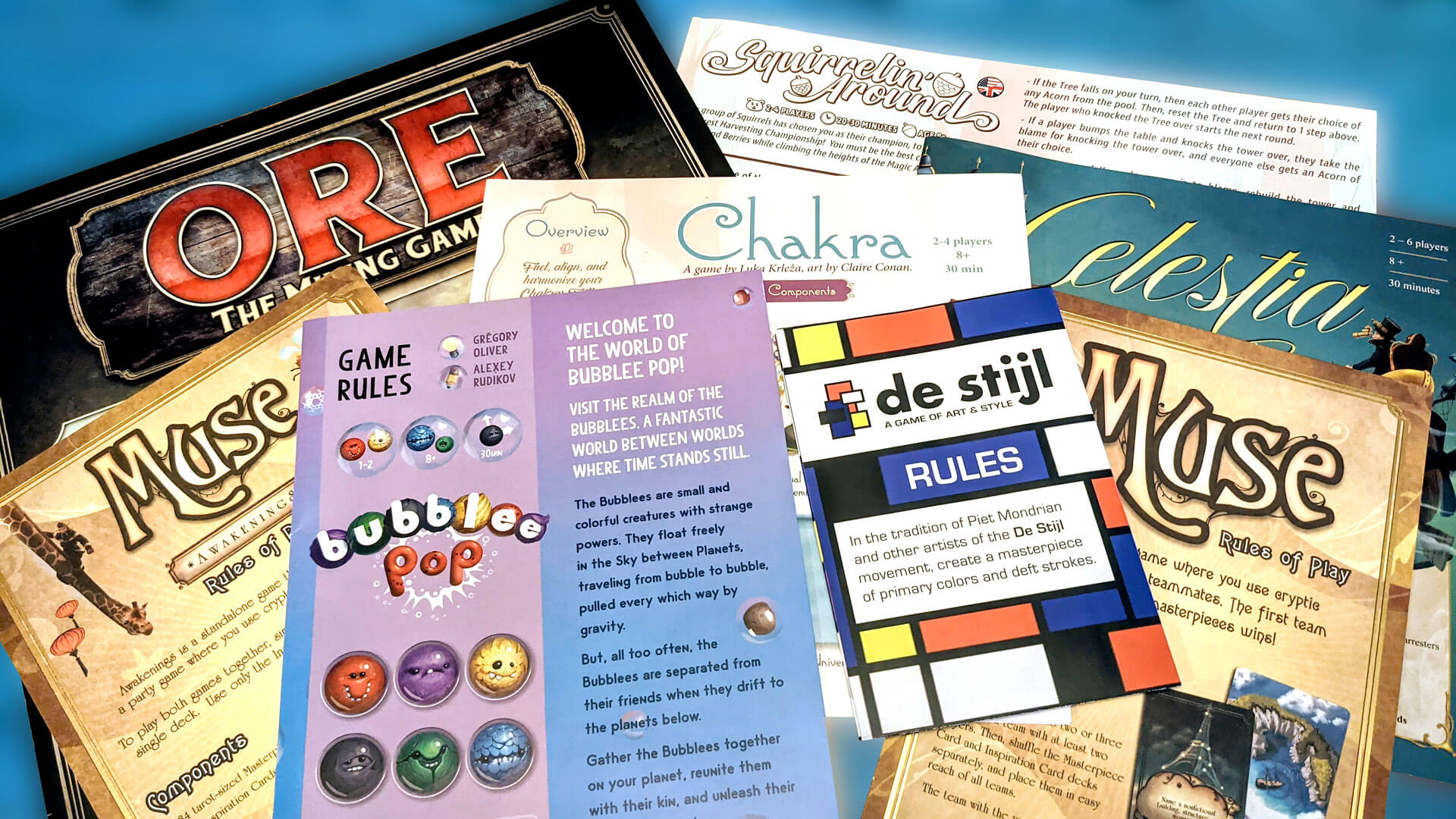The first rule to rules that rule is to have a really great rulebook.
If you’re a designer looking to solicit your game for playtesting, the number one piece of advice I can give you is to make sure you have a good rulebook. You know how to play the game, your friends who have helped you test it know how to play the game, but I don’t know how to play the game. We have received rulebooks that are missing key steps or quality examples, or useful explanations, because while all of that is intuitive to the person who designed the game, they aren’t intuitive to the new person learning the game for the first time.
Practice by describing common activities, like making a sandwich.
Have you ever heard of the classic example of the “peanut butter and jelly sandwich” essay? It is a writing prompt where the goal of the writer is to guide the reader through performing a very simple task: making a peanut butter and jelly sandwich.
You, as the writer, have to get me, as the reader, through the entire process so that at the end of the essay, I can enjoy my lunch.
You say to yourself, “Hey, how hard can that be, you just take jelly and peanut butter and put it on some bread, then put the pieces of bread together”. It’s that easy, right? Nope! Think about every single discrete step in this process.
First, you have to go to the pantry and get the individual ingredients.
Then, you have to go to your cabinet and get your plate, and then to the silverware drawer to get a knife.
THEN, you open the jars—and so on—until you have fully made the sandwich.
You need to put this same sort of thinking into your game, from set up to scoring. You aren’t going to be there every time someone plays your game, so you need to have a quality guide on how to do everything for this game.
- How do I set it up?
- What does the table look like after the board and cards and tokens are all out?
- How does a round go?
- What do I do on my turn?
- What happens if there is a conflict?
- What do we do if there is a tie?
- Etc.
While you can argue that it’s possible to have too many rules, it is not possible to have a too-defined rulebook.
Ultimately, the best way to know if your rulebook works is to test it!
My biggest recommendation here would be to type up your rules, give them to a group that has never played the game before, and see if they can correctly set up and play the game with no help from you whatsoever. There are a lot of great playtesting events and groups around the US that you can join, where you can receive great feedback from experienced playtesters and other designers. You can even play other designers’ beta games and help them get better at their craft too!
Don’t forget the small stuff, either.
A final recommendation I have is including a player aid card, especially if you have a lot of moving pieces or things to track in your game. A good player aid card will explain important symbols, how a round of play works for all of the players, and how a player’s turn will go. If you have specific terms that you use throughout the game as well, explain that on the card too. I can’t tell you how helpful having these cards have been in playing published games, so they are twice as helpful for playtesters with beta versions of games.
